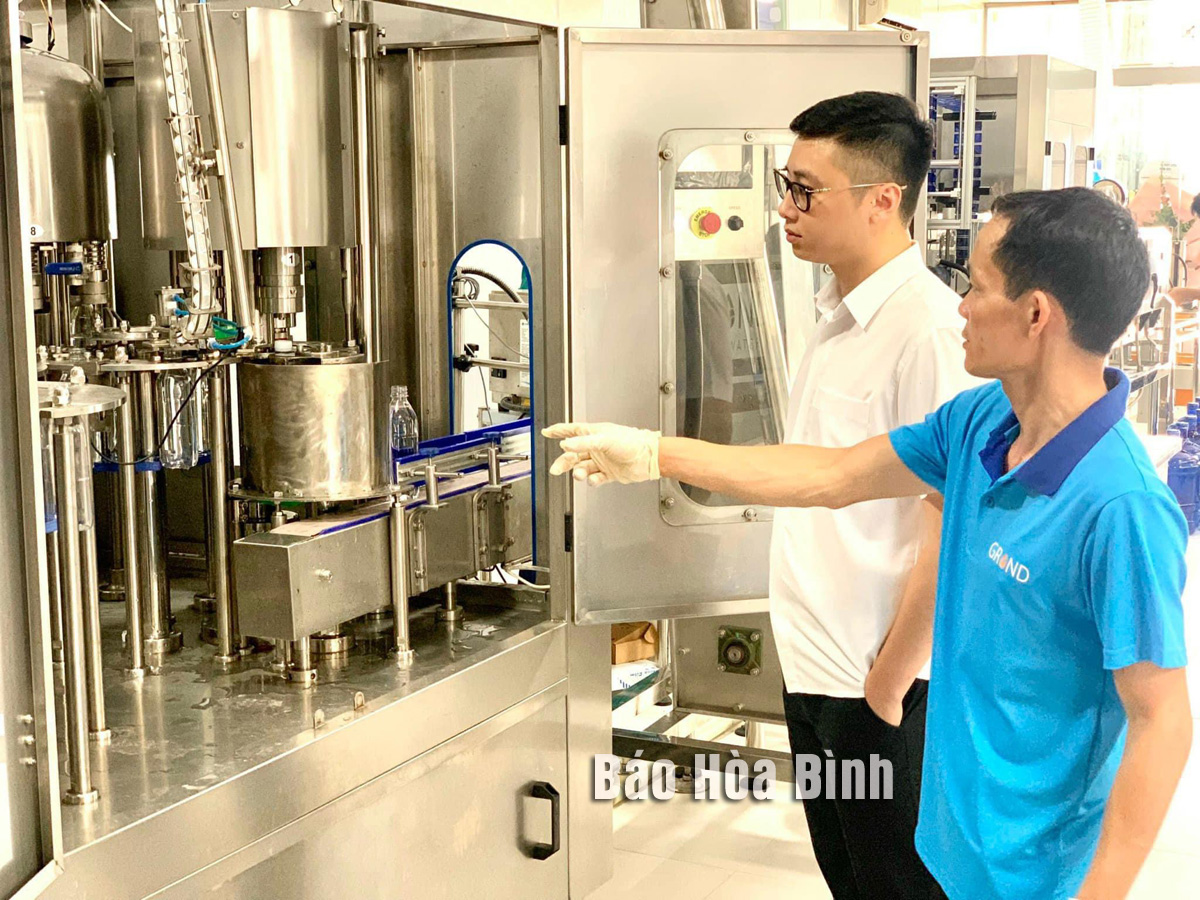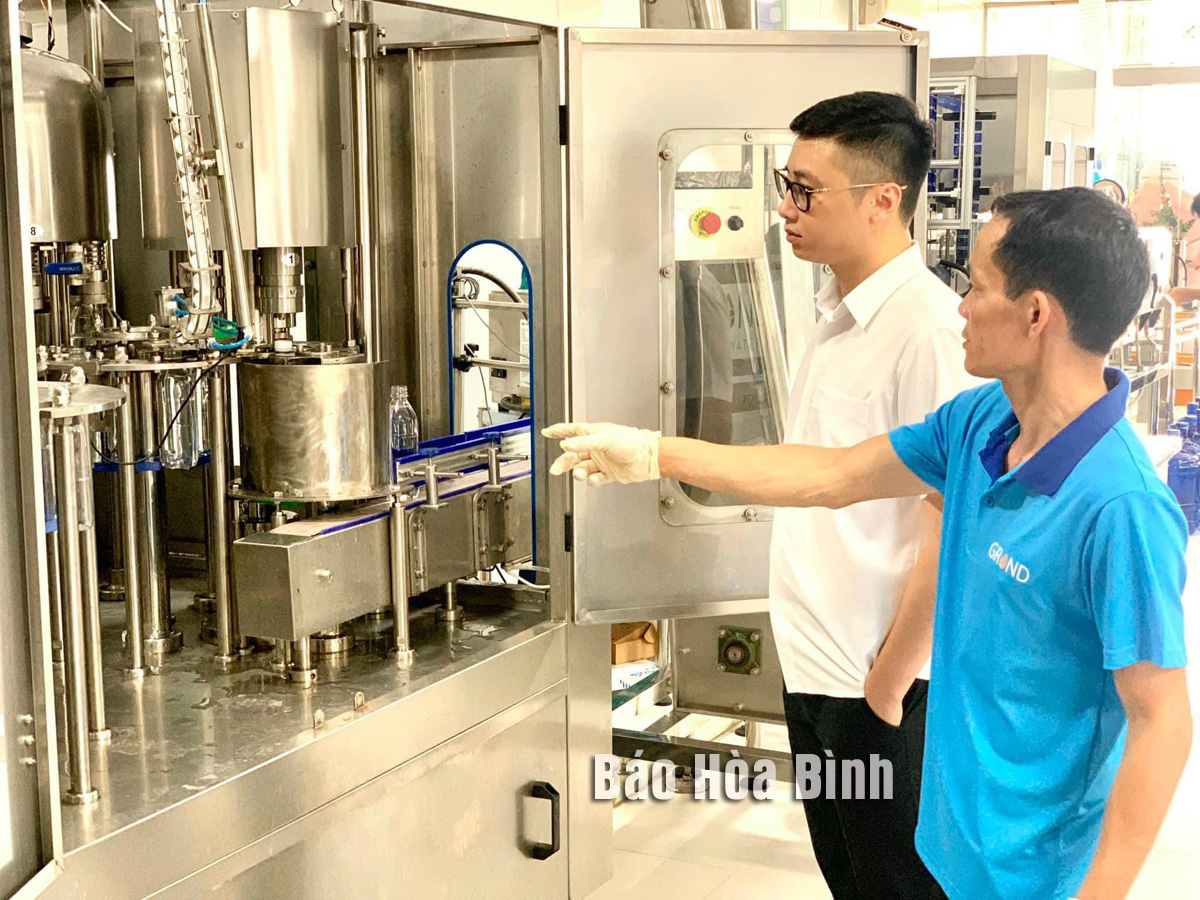
The One Commune One Product (OCOP) program increasingly affirms its important role in enhancing local agricultural products. In Kim Boi district, many policies to support the construction and development of key products, potential and strengths of the locality have been implemented effectively. Since then, local agricultural products have become valuable goods, contributing to improving people's income and lives.

Mineral water of Kim Boi Mineral Water joint Stock Company is aiming for a 5-star OCOP product.
In 2024, Hoa Binh province has 14 products participating in the evaluation and classification of OCOP products at the provincial level. Among them, Kim Boi district has 2 products: Hop Tien forest honey of Greenlife Cooperative - Hop Tien commune and Kim Boi mineral water of Kim Boi Mineral Water joint Stock Company. Through evaluation, both products of Kim Boi district are eligible to be classified as 4-star OCOP products at the provincial level. Currently, the district has 12 provincial-level OCOP products, of which 2 products meet 4-star standards, and the remaining products meet 3-star standards.
In recent years, Kim Boi district has prioritized advertising, trade promotion, brand building, and connection to consume OCOP products. The district also actively coordinates with relevant units to support bringing products to e-commerce and export platforms...
Besides, to build and develop sustainable OCOP products, Kim Boi district promotes the application of science and technology in agricultural production, commodity production, creating quality agricultural products, improve product competitiveness in the market.
Up to now, Kim Boi district has over 200 hectares of crops produced according to VietGAP standards. The district has formed zucchini and cucumber growing areas concentrated in communes: Nam Thuong, Sao Bay, Kim Lap, Du Sang with about 60 hectares/area; potato growing area in Vinh Dong commune; Citrus fruit growing areas in communes: Tu Son, Kim Lap, Vinh Tien, My Hoa with about 100 hectares/commune; the medicinal plant growing area is about 40 hectares in Hung Son commune. The district maintains and develops production linkage models along the value chain from consumption to processing. This is the advantage of input material areas for Kim Boi to build OCOP products.
In the coming time, Kim Boi district will continue to support the construction and development of OCOP products from local raw materials.
According to data from the Hoa Binh Provincial Party Committee, the industrial production index for the first six months of 2025 is estimated to have increased by 20% compared to the same period last year. This marks the highest year-on-year growth rate for this period since 2020.
In the first six months of 2025, Hoa Binh province’s export turnover was estimated at 1.145 billion USD, marking an 18.11% increase compared to the same period in 2024. Import turnover was estimated at $ 804 million, a 17.15% increase, which helped the province maintain a positive trade balance.
The lives of the ethnic minority farmers in Tan Lac district have gradually improved thanks to the new directions in agricultural production. This is a testament to the collective strength fostered through the professional associations and groups implemented by various levels of the district’s Farmers’ Union.
With the motto the "product quality comes first,” after nearly one year of establishment and operation, Muong village’s Clean Food Agricultural and Commercial Cooperative, located in Cau Hamlet, Hung Son Commune (Kim Boi district), has launched reputable, high-quality agricultural products to the market that are well-received by consumers. The products such as Muong village’s pork sausage, salt-cured chicken, and salt-cured pork hocks have gradually carved out a place in the market and they are on the path to obtaining the OCOP certification.
In the past, the phrase "bumper harvest, rock-bottom prices" was a familiar refrain for Vietnamese farmers engaged in fragmented, small-scale agriculture. But today, a new spirit is emerging across rural areas of Hoa Binh province - one of collaboration, organisation, and collective economic models that provide a stable foundation for production.
Maintaining growing area codes and packing facility codes in accordance with regulations is a mandatory requirement for agricultural products to be eligible for export. Recently, the Department of Agriculture and Environment of Hoa Binh province has intensified technical supervision of designated farming areas and packing facilities to safeguard the "green passport" that enables its products to access international markets.



